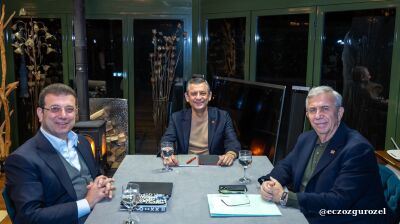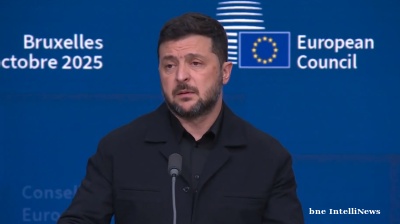It was one of the greatest escapes ever. In November 2018, Carlos Ghosn, the French-Lebanese CEO of Renault and Nissan, was arrested by Japanese authorities in Tokyo and confined to his home while awaiting trial on charges of misuse of company funds. But a year later he disappeared from Tokyo, only to resurface in Lebanon. He had been smuggled out of his house by hired confederates, hidden in a large box intended for musical equipment, and whisked out of Japan on a private jet to Beirut. Lebanon has no extradition treaty with Japan, and despite all the efforts of the Japanese, Ghosn remains in Lebanon to this day, a wanted man nearly everywhere in the world. At the time of his arrest, Ghosn was one of the most famous men on the planet, a man of near rock-star status. Seldom has an international reputation exploded with such spectacular fireworks.
But what does this have to do with Russia and with Western sanctions? Everything. Ghosn was the man who brought Renault to Russia at Putin’s invitation, and thus launched the French company on a fifteen-year, multi-billion-dollar odyssey that ended with Putin’s invasion of Ukraine and Renault’s abrupt withdrawal from Russia, together with the other Western auto companies.
Their departure has left the Russian auto industry in a shambles. Russian factories, facing shortages of key components (notably those using semiconductors), have been forced to interrupt production, sometimes for months at a time, and some completely. Workers are being laid off or being made part-time at reduced wages. By July 2022, new-car sales had dropped by over 80% compared to July 2021, as over 120 000 unsold cars piled up in dealerships.
The biggest casualty is the flagship AvtoVAZ complex in Tolyatti, a city on the Volga River, which employs over 32,000 workers and is Russia’s largest automobile producer. The French company Renault had been a partner at AvtoVAZ since 2004, and since 2012 it had been the controlling owner. The partnership was strongly supported by Putin, who played a major role in persuading Renault and its then-chairman Carlos Ghosn to take control of AvtoVAZ, a perennial money-loser inherited from Soviet times.
Why has the Russian automotive industry proved to be so vulnerable to Western sanctions? What was the role of Renault and Carlos Ghosn? Can AvtoVAZ be turned around without Western partners? And will Renault ever return to Russia?
CARLOS GHOSN’S REVOLUTIONARY VISION
To understand what Renault brought to Russia, and why its departure has had such disastrous consequences, let’s begin with Carlos Ghosn and his unique role in the global auto industry.
At the start of the 2000s the global auto industry was ripe for a revolution. It was a mature technology, based on traditional components and materials – mainly metals – and largely unchanged in decades. But at the turn of the century new materials (such as plastics and other synthetics) and high-tech components (particularly semi-conductors and information technology) began creating the basis for a new industry. Car people speak of “analog” cars (the old-fashioned kind) and “digital cars,” which feature innovations such as anti-lock brakes, traction control, airbags, advanced power steering, all under digital controls. Today, a “digital” car contains over 50 computers, which have become so familiar that we take them for granted. But it isn’t only the cars that have gone digital; factory production lines (e,g, automation and robotics) and supply systems (e.g., “just-in-time”) are likewise being turned upside down.
This trend has had two revolutionary implications: first, it produces cheaper yet more modern cars, ideally suited to a fast-growing mass market in developing countries; second, the automation of production and the outsourcing of components means that the auto industry has less and less need for high-paid skilled labour; this too favours investing in developing countries, where cheap unskilled labour is plentiful. But most developing countries cannot yet produce the advanced digital components on their own. This creates the opportunity for an international division of labour, between high-tech suppliers and lower-tech assemblers.
The first auto executive to grasp the revolutionary implications of this trend for the auto industry – and to act on it – was Carlos Ghosn. Ghosn, who came from a Lebanese-Brazilian family but had studied in France, was a classic product of the elitist French system. Recruited by Renault, which at the time was skirting bankruptcy, Ghosn turned the company’s chronic losses into profits within four years. He achieved the same feat again when Renault sent him to Tokyo to rescue Nissan, Renault’s partner. By 2005, when he became CEO of Renault, Ghosn had become the rock star of the business world, known as “Le Cost-Killer,” featured as a hero in a Japanese manga comic book and on a postage stamp in his native Lebanon. All over the world he was hailed by the business media as one of the world’s leading entrepreneurs.
Ghosn’s business model for Renault, which stemmed from his observations in Japan and an earlier stint with Michelin in Latin America, was a “spoke and wheel,” using European (mainly French) technology to make advanced components, which were then shipped to plants all over the developing world for assembly on standardised platforms, using cheap local labour and “just in time” production techniques. The model was first tried out successfully in Romania (where Renault had acquired the local automaker Dacia), then expanded to plants throughout the developing world.
RENAULT COMES TO RUSSIA
Russia seemed the perfect candidate. In the early 2000s the Russian auto industry was in a state of collapse. It suffered from the classic ailments of Soviet-legacy industry, combined with the baneful effects of Russia’s “Wild East capitalism” of the 1990s – antiquated models and production lines, corrupt contractors and suppliers, technological backwardness, financial incompetence and bloated and inefficient workforces. In short, it seemed tailor-made for Ghosn’s vision.
In 2007, Putin came to Paris to personally court Ghosn and the French government. Renault agreed to take a 24% stake in AvtoVAZ and to supply the technology needed to modernise the plant. Ghosn’s ambitions seemed limitless: in 2009, he trumpeted that Renault would be producing 1.4mn cars in Russia by 2017, and that Russia would soon be his largest market.
But Renault’s first experience in Russia ran into bad luck. No sooner had the partnership been concluded than the “subprime” crisis of 2008-9 hit the world. AvtoVAZ’s sales, instead of increasing, fell by half. But as a minority shareholder, Renault had no power. So when Putin pressed Renault for a fresh injection of capital, Ghosn insisted on total control. In 2012, Renault took a 51% stake in AvtoVAZ, and Ghosn became chairman (along with his other hats), with a majority on the board.
It was now up to Renault to show what it could do. Ghosn hired a tough Swedish auto executive named Bo Andersson to run AvtoVAZ. Andersson was no newcomer to Russia; he had caught Ghosn’s eye when he turned around Russia’s truckmaker GAZ and made it profitable. As the new CEO of AvtoVAZ, Andersson promptly laid off 30,000 employees, purged AvtoVAZ’s corrupt network of suppliers, and set up a new supply system based on imports of advanced components and platforms from abroad. But Andersson’s two-fisted tactics provoked demonstrations at AvtoVAZ and brought threats of reprisals from suppliers. And once again events intervened: Russia’s actions in Ukraine in 2013-14 provoked Western sanctions, and the ruble collapsed, making the reliance on imported parts unprofitable. In 2015 AvtoVAZ’s sales cratered. The following year, Andersson was dismissed.
By this time Renault had been in Russia for a decade, and had ten straight years of losses to show for it. Clearly a new approach was needed. In 2016 Renault named a new CEO, a procurement specialist named Nicolas Maure, a man with experience in both Russia and Romania and, most importantly, a more diplomatic personality. Maure developed a “compromise” version of the original Ghosn model (as he put it delicately, “nous avons arrondi les angles” – “we softened the rough edges”), which made greater use of Russian suppliers, although it continued to rely on imports for digital components. In 2017, for the first time, Renault made a profit at AvtoVAZ, and the next four years, from 2018 to 2020, was consistently profitable. Renault, it seemed, had finally found the handle. Then came the Ukrainian invasion, and overnight Renault was gone.
What would the future have brought if the invasion had not occurred? There was always a contradiction at the heart of Renault’s Russian operation. Putin initially accepted the Ghosn model for the sake of developing quickly a new generation of cars for the Russian domestic market. But the implied unequal division of labour – with the French importing the “smart” parts and the Russians supplying the “dumb” labour – was never going to be acceptable except as a temporary expedient. Over time, between the mid-2000s and the 2010s, Russian insistence on “import substitution” and full “localisation” stiffened. There would likely have been renewed conflict ahead.
THE IMPACT OF WESTERN SANCTIONS AND RENAULT’S DEPARTURE
What future now awaits AvtoVAZ? The imposition of sanctions and the sudden departure of its majority owner leave AvtoVAZ in limbo. It is able to produce “analog” cars using existing Russian technology, but not “digital” cars, since under Ghosn’s “spoke and wheel” model the digital components continued to come mostly from abroad, and for the most part they are now no longer accessible.
The one course immediately available is to retreat “temporarily” to earlier models, such as the Soviet-era “Moskvich” (now being revived by Renault’s former plant in Moscow), and “plain vanilla” Ladas, produced without digital components such as automatic brake systems, airbags and GPS.
The government is vowing to accelerate its “import substitution” programme under a new CEO, the former minister of transportation, Maksim Sokolov. But it will take years before AvtoVAZ will be able to produce digital cars entirely from Russian components. Meanwhile, near-term opportunities for “parallel imports” are limited, since the countries that produce advanced parts are mostly aligned with the Western sanctions, and many of their key components are under licence agreements with Renault. The outlook for AvtoVAZ is poor.
What about the future of Renault? Through fifteen years of effort and expense, Renault endured three economic crises, countless conflicts and misadventures, and ended up with net losses of over $2bn. But with the departure from Russia, Renault has lost its second largest market, and one that was finally producing profits. It has now retreated to its home base in France, where it now faces a battle for its very survival, as the era of the electric vehicle (EV) arrives in Europe. The Ghosn era is a distant memory. Renault may never return to Russia.
The Renault story is just one part of the larger picture of the impact of Western sanctions on Russian industry. Over the past thirty years, both the Russian government and companies accepted a high degree of dependence on Western technology and supply chains, taking advantage of the global division of labour. In the short run, this was a rational choice, since it brought “quick wins,” in the form of rapid improvements in products and services, such as automobiles. But it also left the Russian economy vulnerable, by lessening the incentive for home-grown innovation and perpetuating the chronic weaknesses of Russian technology. The Western sanctions have now exposed that vulnerability.
The automobile industry is just one example. In my next Substacks post, I invite you to join me to look at a different case: the impact of sanctions on the Russian effort to develop LNG, liquefied natural gas – a subject much on our minds these days. Please stay tuned.
Thane Gustafson is a professor of political science at Georgetown University and the author and co-author of eight books on Russian affairs, including most recently Wheel of Fortune: the Battle for Oil and Power in Russia (2012), The Bridge: Natural Gas in a Redivided Europe (2020), and Klimat: Russia in the Age of Climate Change (2021), all with Harvard University Press.
This article first appeared on his Substack channel here, where you can sign up for more of his writing.
Features

US expands oil sanctions on Russia
US President Donald Trump imposed his first sanctions on Russia’s two largest oil companies on October 22, the state-owned Rosneft and the privately-owned Lukoil in the latest flip flop by the US president.
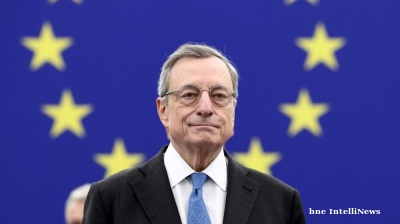
Draghi urges ‘pragmatic federalism’ as EU faces defeat in Ukraine and economic crises
The European Union must embrace “pragmatic federalism” to respond to mounting global and internal challenges, said former Italian prime minister Mario Draghi of Europe’s failure to face an accelerating slide into irrelevance.
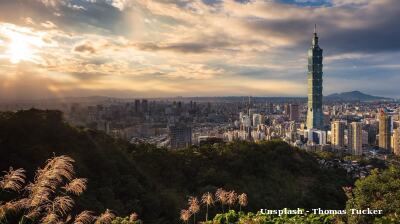
US denies negotiating with China over Taiwan, as Beijing presses for reunification
Marco Rubio, the US Secretary of State, told reporters that the administration of Donald Trump is not contemplating any agreement that would compromise Taiwan’s status.
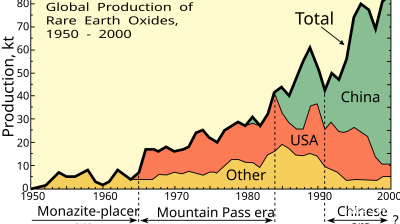
Asian economies weigh their options amid fears of over-reliance on Chinese rare-earths
Just how control over these critical minerals plays out will be a long fought battle lasting decades, and one that will increasingly define Asia’s industrial future.
